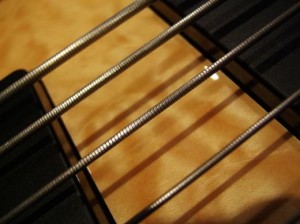 Buying a set of bass guitar strings can be one of the toughest decisions you’ll ever make.
Buying a set of bass guitar strings can be one of the toughest decisions you’ll ever make.
How bright do those sound?, will those sound good in the mix?, will my bass be heard on stage?, will these give me more of an upright bass tone or more of a Chuck Rainey-1970s sound? are just some of the questions you might find yourself asking yourself as you stare behind the counter at the brightly colored packages and the cashier is giving you that look to move it along.
It cant’ be stressed enough just how important a decision picking the right set of strings can be. Not only are you financially invested in buying the strings, you’re just as invested in the tone that comes with them.
Tone too bright for your taste?
You might need to live with it until the strings wear a bit and give you a more dampened sound? Strings too dead for your taste or sound bad in the mix?
Might be 25 dollars down the drain.
The act of buying the strings can be a task in and of itself.
There are very many brands out there with lots of different metals, winds and sonic descriptions.
A Beginners Guide to Bass Guitar Strings:
This post is here to help you answer the questions:
- What kind of bass guitar strings should I buy?
- Which bass guitar strings should I buy?
- What is string gauge? How do I determine the string gauge on my bass?
We’re going to be looking at the major kinds of strings currently out there on the market and break down some of the important qualities.
Roundwound Strings
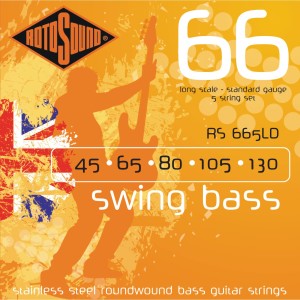 Certainly one of the more common types of strings you’re likely to encounter at your local guitar shop, roundwound bass strings are the “standard” type of bass strings that you’d find on just about any bass in a shop.
Certainly one of the more common types of strings you’re likely to encounter at your local guitar shop, roundwound bass strings are the “standard” type of bass strings that you’d find on just about any bass in a shop.
Roundwounds are made of a metal core wrapped with round metal wire (hence the term, roundwound).
This metal is usually nickel or stainless steel but there are some other options available for use as well that we’ll discuss later.
Roundwound have a handful of distinct characteristics to them. These strings tend to have a very bright, very piano-like sound and quality. Some have characterized this piano-esque sound as a “bite” or “edgy”.
Geddy Lee, Jack Bruce, Chris Squire, Billy Sheehan are among some of the major names who are roundwound string users. John Entwistle of the Who even helped to design Rotosound’s roundwound bass string series, the Swing Bass series alongside James How.
Modern rock, punk, funk and many other genres of music likely have a bass player playing with a bas strung up with roundwound strings.
Since rountwounds and flatwounds are the most popular types of strings populating the bass guitar string market, picking the right string can be a challenge. Here are some popular string brands to get you going with roundwounds. If you’re looking for a pair of roundwound strings to try, your safest bests are likely to be:
- Rotosound Swing 66 Strings: reasonably, priced, classic sound and have been the go-to for countless famous bass players including Jaco, John Entwistle, Billy Sheehan and countless others.
- DiAddario EXL220 Nickel Wound Bass, Super Light: again, very resonably priced set of strings that deliver all the classic sonic qualities of a roundwound string. A very trusted brand and a go-to for countless bass players.
Flatwound Strings
Flatwound strings are constructed similar to roundwounds but instead of a round wire wrapped around the core, a flat wire is used instead (see the second string below).
This process gives the strings a smooth feel as opposed to the textured feel of a set of roundwounds. Flats tend to provide a warmer and rounder tone than rounds and are popular with genres that rely more on a fatter more upright bass sound like Motown, reggae and classic rock from the 1960s and late 1950s.
Fretless basses are commonly strung with flatwound strings because the grooved texture of rounwound strings can be damaging and scrape the bass’ fretboard with too much use. Jaco Pastorius’ bass was (and still is) a great example of the tone that a bassist can get when you use roundwound strings on a fretless bass.
Moreover, many fretless players play flats because they can emulate a standup bass sound – a distinct difference between roundwound and flatwound strings.
Famous players with flats on their bass include James Jamerson, Bernard Odum from James Brown’s backing band, the JBs, Steve Harris from Iron Maiden and Family Man Barrett from Bob Marley’s backing band, the Wailers.
Flatwound strings are a little bit less varied in maker compared to roundwound strings. LaBella Deep Talkin’ Bass Strings are a hallmark brand of strings as they were the strings that James Jamerson used on is famous Precision bass and have certainly earned a place as a standard of flatwound strings.
Moreover, LaBella is one of the oldest string companies in the world with over 350 years of production!
If you’re looking to try out some flatwound strings, many of the brands mentioned above also offer a flatwound string including GHS, DR and DiAddario.
Half-Round Strings
Half-round strings are the middle ground between flatwound and roundwound strings.
Half-round strings are made with normal roundwound strings that are ground flat, reducing the rugged string weave while providing the warmth of a flatwound string and also the bite of a roundwound when you start digging into the strings a bit more. They can be great if you like the attack of a roundwound string but want to mellow things out when you don’t go wailing into the strings.
Of all the strings on this list, the half-round strings are certainly the most peculiar simply because they are the middle ground between a roundwound and a flatwound.
When crafting your bass tone, a combination of string type, amp settings and on-bass settings will be the foundation for crafting your tone and with enough equalization can you begin to get some sonic traits that resemble one string over the other (sometimes).
Moreover, half rounds fall into the trap of trying to satisfy flatwound users converting to round and roundwound users converting to flat and rarely please anyone in the process. These kinds of strings, from my experience, seem like an awkward middle ground that should be avoided.
I would advise against looking at half-round strings if you’re brand new to bass.
Nylon Tapewound Strings
Beyond the more common roundwound and flatwound strings for bass guitar, we’re now going to be taking a look at some specialty designs of strings for bass guitar. Nylon tapewound strings are constructed by taking a metal core and then wrapping a flat nylon wire around it.
These strings are even deeper in tone than flats and produce a sound more akin to a stand-up double bass.
Often times you’ll encounter these strings on upright basses or acoustic bass guitars like those made by Godin or Washburn because the strings are very friendly to the fretboard construction and finish of these particular makes of bass guitar and bring out the woody, thumpy, McCartney-Beatle-bass-esque sounds that distinguish these kinds of basses from electric ones.
When it comes to finding a musical setting to play with these strings, the dense, resonant sounds these strings produce and the basses they’re usually equipped on are best in R&B, jazz, and certain blues outfits.
It is also worth noting that these strings can be difficult to come by in your average guitar shop. Mass retailers like Sam Ash and Guitar Center are more likely to carry these kinds of strings.
Coming across a good demo or real-time sample of what these strings sound like can be much more difficult than finding a video demoing a set of Rotosound or DR strings.
Luckily, DiAddario’s Garth Fielding has a great demo video showcasing the nylon flatwounds made by his company here:
A word of caution: nylon flatwounds can be a little bit more difficult to find and it’s likely you might find yourself ordering them over the Internet.
Moreover, fewer brands out there make these strings so your selection might be a little bit more limited. Like before and what I’m going to say with the next two types of strings, major brands are likely to carry some kind of this string like LaBella and Rotosound.
Coated Roundwounds
Coated roundwound strings are constructed the same was as “normal” roundwounds but are then coated with a thin film that protects the string from corrosion and grime buildup.
Sonically, coated roundwound strings tend to have a more even attack, average fade and decay and a slightly more mellow sound.
One particularly interesting aspect about coated strings is that they have an advantage of not conveying as much noise when you change position or slide around on the neck as regular roundwounds.
Though an advantage, coated roundwounds are still but are not as quiet as flatrounds in this regard.
While typically more expensive than uncoated roundwounds, they also last longer so that you may not have to go through as many string changes, which is certainly as much a plus as it is a minus depending on your playing habits as a player.
For hardcore gigging musicians in demanding genres like hard rock or metal, these strings will do you wonders for their longevity and ability to take a beating.
However, with heavy playing, the coating will start to tear off, giving you a “fuzzy string”, though this doesn’t affect the tone too much but can leave your hands feeling, well, unclean after a hard show or practice. Yuck.
You’ve likely seen the company, Elixir, make these strings more than anyone else.
– – – –
Some Words on String Gauge for Bass Guitar
Now that you’ve been introduced to the fundamental groups of strings, now we can tackle string gauge and what that means to understanding your bass and picking out a set of strings that not only sounds great but fits your bass.
Gauges of a string is it’s thickness measured in thousandths (0.001) of an inch. When you pick up a set of strings it will usually have four numbers printed on it (for a four string set, anyway).
On this pack of Rotosounds, we see 45, 65, 80, 105 and 130. Each of these numbers denote the gauge or size of each of the string. The smaller the number the thinner the string. In this case, 45 would be the G string whole 130 is likely to be the B string on this set of strings intended for a 5 string bass.
Your standard set of strings for a 4 string bass will likely have measurements around these numbers:
- G string: ~45
- D string: ~62-65
- A string: ~78-81
- E string: ~102-105
The gauge of the string also determines the tension that the string puts on the neck of the instrument as well as how “tight” the strings are when strung up. Generally, the heavier the gauge of string that you use, the tougher the string will be to bend, therefore the E string is (usually) harder to bend then the G string.
There are several different types of string gauge sets out there and I suggest to try a few to see what gauges fit your play style. I personally use a set that’s 105, 85, 70, and 50.
These are usually touted as medium gauge strings and they’re a bit thicker than what tends to be more common (which is 100, 80, 60, and 40) and it makes the strings just a bit stiffer to play. I like a bit of resistance to bending in my sets and this slightly heavier gauge helps out with that desire.
For folks that routinely down tune to D or C, you may want some even thicker strings to put on your bass. Some manufactures produces sets that have a 110 E string or even a 115. Be forewarned with any change in gauge of strings, especially if it’s a drastic change, you will need to have your bass set up.
Different gauges of strings will put different amount of tension on your neck, causing it to bow or have a relief. This can be remedied with an adjustment of the truss rod in your bass’s neck. You will also have to adjust the intonation on the saddles on your bridge to compensate for the new gauges.
No Treble’s Damian Erskine also has a great article on string gauge and adjustment certainly worth checking out.
Conclusion:
Though there are a lot of brands, numbers, colors, pitches and information about bass guitar strings, but finding that right set of strings is not as hard as it looks. Reviewing what we learned:
Roundwound strings:
- Distinct rounded appearance
- Have a characteristic their “biting piano-like sound”
- Very common type of string made by countless distributors. When in doubt or looking for your first pair to try, look for the Rotosound Swing 66 strings or DiAddario XL Super Lights
Flatwound strings:
- Strings used by James Jamerson and Paul McCartney in early Beatles recordings. Can also be heard predominantly in old-school rock and roll, blues, and reggae
- The sound is supposed to emulate an upright bass: warm, round, thumpy essentially the opposite of a roundwound string.
- Also very common type of string. Most major brands including Rotosound, DiAddario, GHS and most famously LaBella all have some model of flatwound string.
Half-Round strings:
- The middle ground between a roundwound and a flatwound
- The sound is best described as mellow with a bit of bite
- Can be difficult to find in most guitar stores
Nylon Flatwound strings:
- Typically found on acoustic bass guitars or uprights
- Nylon quality provides a deep, thumpy tone with a fair amount of resonance. Best described as the cousin of the flatwound because of their similar tone outputs but typically different placements
- Can be difficult to come by as well. Likely to have better luck finding them on the Internet.
Coated Roundwound strings:
- More “even” tone and average fade, similar to a roundwound string but with less bite
- Very long lasting because of the coating on the strings
- However, coating does wear off over time and will come off on your hands, resulting in a grimy feeling on your hands after playing.
- A little bit more on the costly side and fewer brands do make these strings
- How to Set up a Pedal Board for Bassists - June 16, 2021
- The Best Bass Guitar Effects Pedals Guide You’ll Ever See [INFOGRAPHIC] - April 24, 2020
- The Ultimate Beginner’s Guide to Everything About Bass Guitar Strings - March 20, 2020
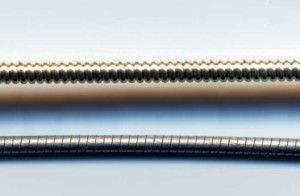
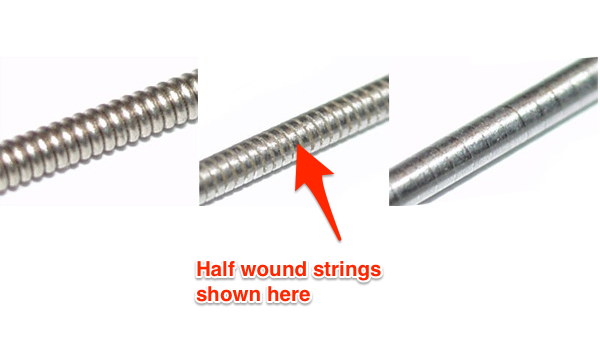
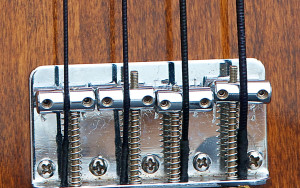
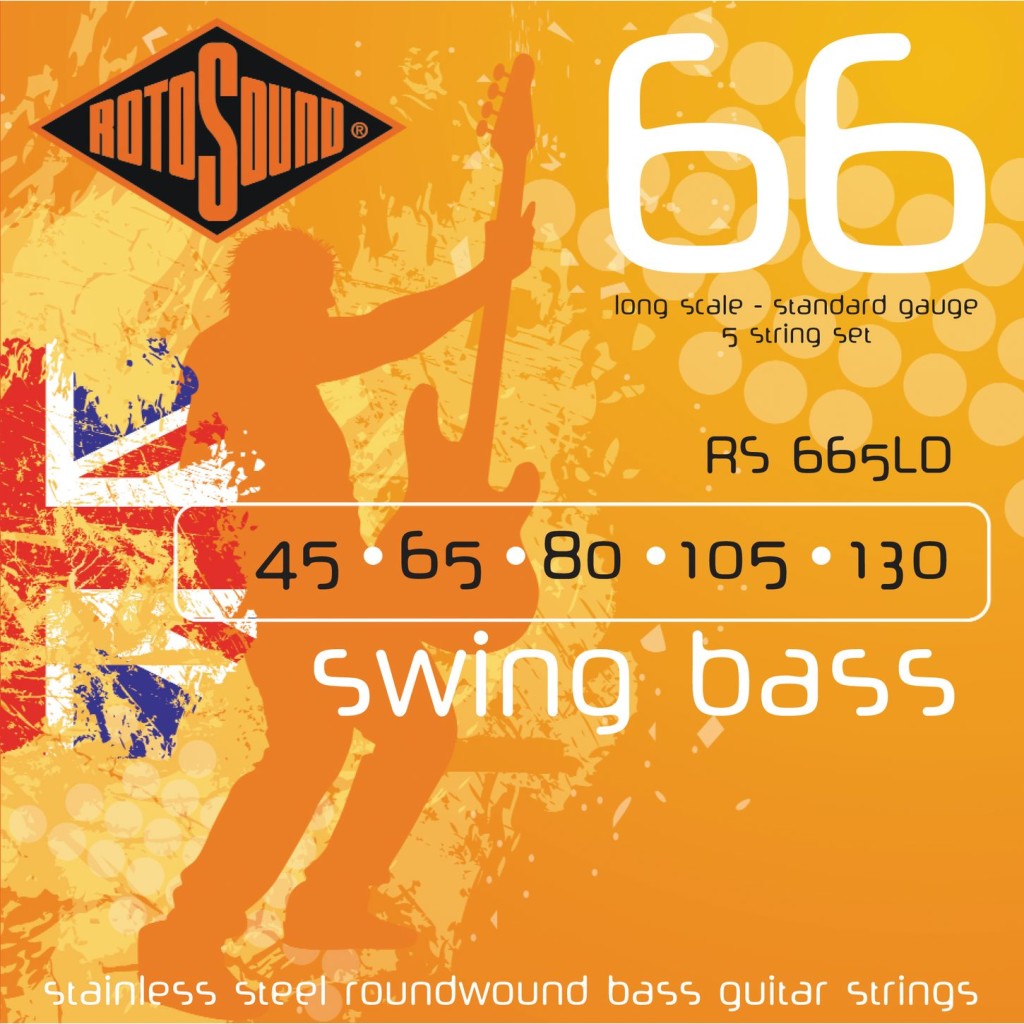
Thanks Mike. This is a lot of detailed information. I found it very detailed & helpful.
Still helping folks in 2022! Appreciate the breakdown of string types.
He didn’t even mention FENDER brand bass strings.
I use Fender pure nickel 7150’s
in .105″, .085″, .065″, .045″
fantastic vintage tone and response! Perfect for
Jazz, Blues and 1960’s rock on my Precision bass